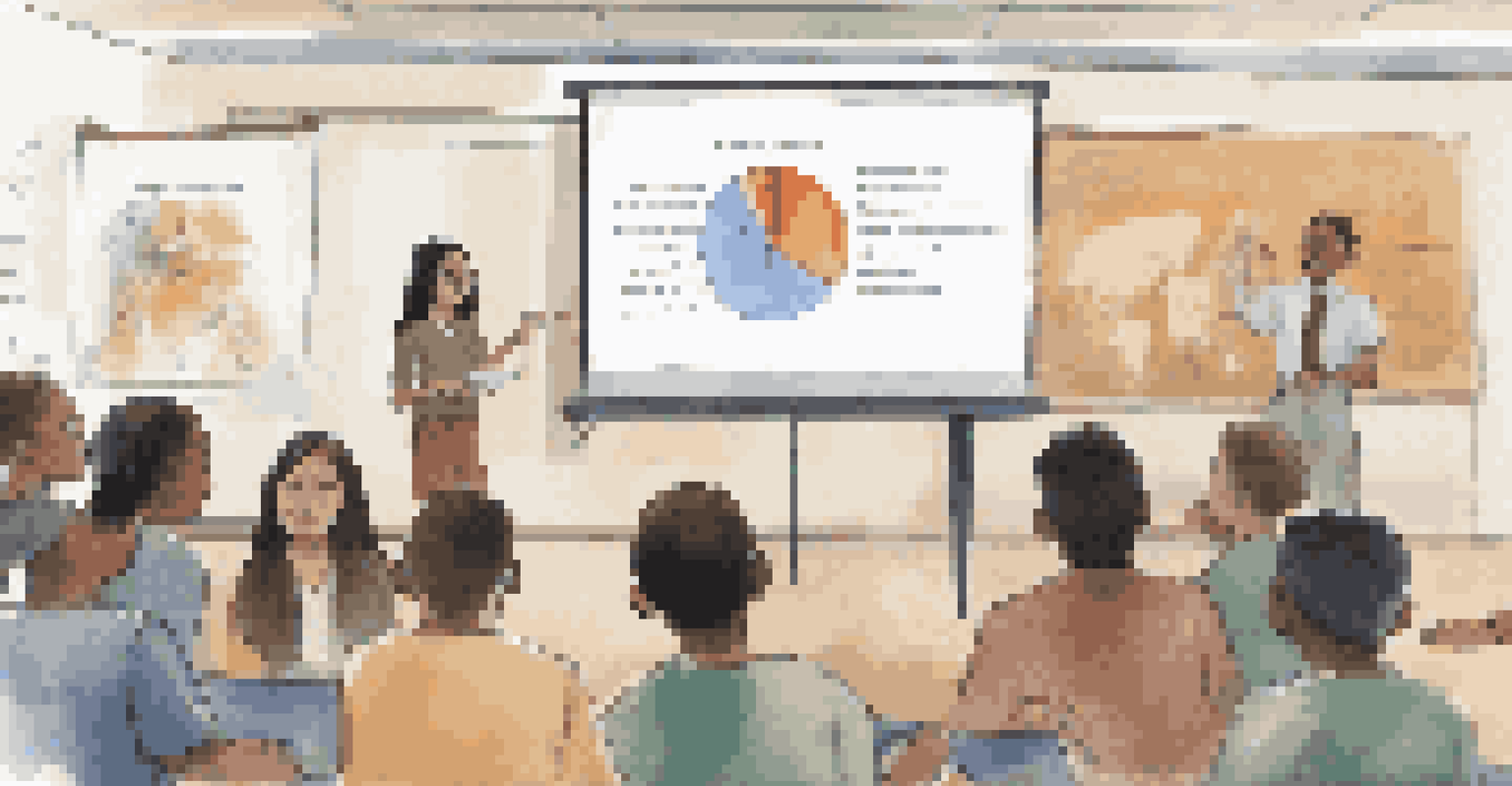Project-Based Learning as a Catalyst for Student Innovation

Understanding Project-Based Learning and Its Benefits
Project-Based Learning (PBL) is an educational approach that encourages students to engage in real-world projects. This method emphasizes collaboration, critical thinking, and creativity, allowing students to learn by doing rather than through traditional lectures. By immersing students in hands-on experiences, PBL helps them develop essential skills that are crucial in today's complex world.
Tell me and I forget. Teach me and I remember. Involve me and I learn.
One of the key benefits of PBL is that it fosters deep learning. Instead of memorizing facts for a test, students explore topics in depth, which leads to a greater understanding and retention of knowledge. This experiential learning approach also makes education more relevant, as students see the connection between their projects and real-life applications.
Moreover, PBL cultivates a sense of ownership in students. When they take charge of a project, they become more invested in their learning journey. This empowerment not only boosts their confidence but also motivates them to think outside the box and innovate.
How PBL Encourages Creative Problem Solving
At its core, Project-Based Learning is about tackling problems creatively. Students are presented with challenges that require them to brainstorm solutions, thus encouraging outside-the-box thinking. This process not only helps them develop innovative ideas but also teaches them to approach problems from multiple angles.

For instance, consider a group of students tasked with designing a sustainable garden for their school. They might research local flora, study the ecosystem, and even consult with community experts. This project not only requires creativity but also critical thinking as they navigate logistical challenges and environmental considerations.
PBL Enhances Real-World Learning
Project-Based Learning connects students to real-life challenges, making their educational experiences more meaningful and relevant.
Through such experiential learning, students learn that failure is often a stepping stone to success. They begin to see setbacks as opportunities to reevaluate their approaches, fostering resilience and adaptability—traits that are invaluable in any innovative field.
Collaboration: The Heart of Project-Based Learning
Collaboration is a fundamental element of Project-Based Learning. Students often work in teams, which allows them to share ideas, delegate tasks, and support one another. This collaborative environment not only enhances their communication skills but also teaches them the importance of teamwork in achieving common goals.
The only way to do great work is to love what you do.
Imagine a scenario where students are developing a marketing campaign for a local business. Each member might take on different roles—researcher, designer, presenter—allowing them to leverage their individual strengths. This diversity of skills contributes to a richer and more innovative final product.
Additionally, working collaboratively helps students learn to navigate interpersonal dynamics. They develop skills such as conflict resolution and empathy, which are crucial in any professional setting. These experiences prepare them to work effectively in diverse teams in their future careers.
Real-World Applications: Making Learning Relevant
One of the most compelling aspects of Project-Based Learning is its emphasis on real-world applications. Students engage in projects that address actual community issues, making their learning experience more meaningful. This connection to the real world not only enhances engagement but also inspires students to think critically about their impact.
For example, a group might take on a project to reduce plastic waste in their community. They could research alternatives, create awareness campaigns, and even propose solutions to local businesses. This kind of engagement empowers students to see themselves as changemakers, sparking their desire to innovate.
Collaboration Boosts Team Skills
Working in teams during PBL fosters essential communication and interpersonal skills, preparing students for future collaborative environments.
By grounding their projects in real-world challenges, students not only gain practical knowledge but also develop a sense of social responsibility. They learn that their ideas and actions can contribute to the greater good, which can fuel further innovation and commitment to their projects.
Feedback and Reflection: Key Components of PBL
Feedback and reflection are integral parts of the Project-Based Learning process. Throughout their projects, students receive input from peers, teachers, and community members, which helps them refine their ideas and approaches. This ongoing feedback loop is essential for fostering a growth mindset.
After completing a project, students often engage in reflective practices, discussing what worked, what didn’t, and how they can improve in the future. This reflection encourages them to analyze their own learning and understand the value of continuous improvement—key components of innovation.
Furthermore, this culture of feedback promotes a supportive learning environment. Students learn to give and receive constructive criticism, which enhances their collaborative skills and contributes to their overall personal growth. This environment nurtures innovative thinking as students feel safe to take risks and share their ideas.
The Role of Technology in Enhancing PBL
Technology plays a crucial role in enhancing Project-Based Learning. With access to various digital tools, students can research, collaborate, and present their projects more effectively. This integration of technology not only enriches their learning experience but also prepares them for a tech-driven world.
For instance, students can utilize online platforms to connect with industry experts or collaborate with peers from different locations. This global perspective broadens their horizons and exposes them to diverse ideas and approaches, which can spark further innovation.
Technology Supports Innovative Projects
The integration of technology in PBL enriches student research and presentation, enhancing their ability to communicate ideas effectively.
Moreover, technology allows for creative expression in project presentations. From video editing to graphic design, students can showcase their work in visually engaging ways, making their projects more impactful. This creative use of technology enhances their ability to communicate their ideas effectively—an essential skill in any innovative field.
Implementing PBL: Tips for Educators
For educators looking to implement Project-Based Learning, starting with clear goals is essential. Define what you want students to learn and how the project aligns with curriculum standards. This clarity helps guide the design of projects and ensures that they remain focused and relevant.
Incorporating student voice and choice is another critical factor. Allowing students to choose their projects or aspects of their projects increases their engagement and investment in the process. This autonomy encourages them to pursue their interests and fosters a sense of ownership over their learning.

Lastly, be sure to create a supportive environment where experimentation and failure are seen as part of the learning process. Encourage students to take risks and explore new ideas without fear of judgment. This mindset not only enhances creativity but also cultivates a culture of innovation in the classroom.